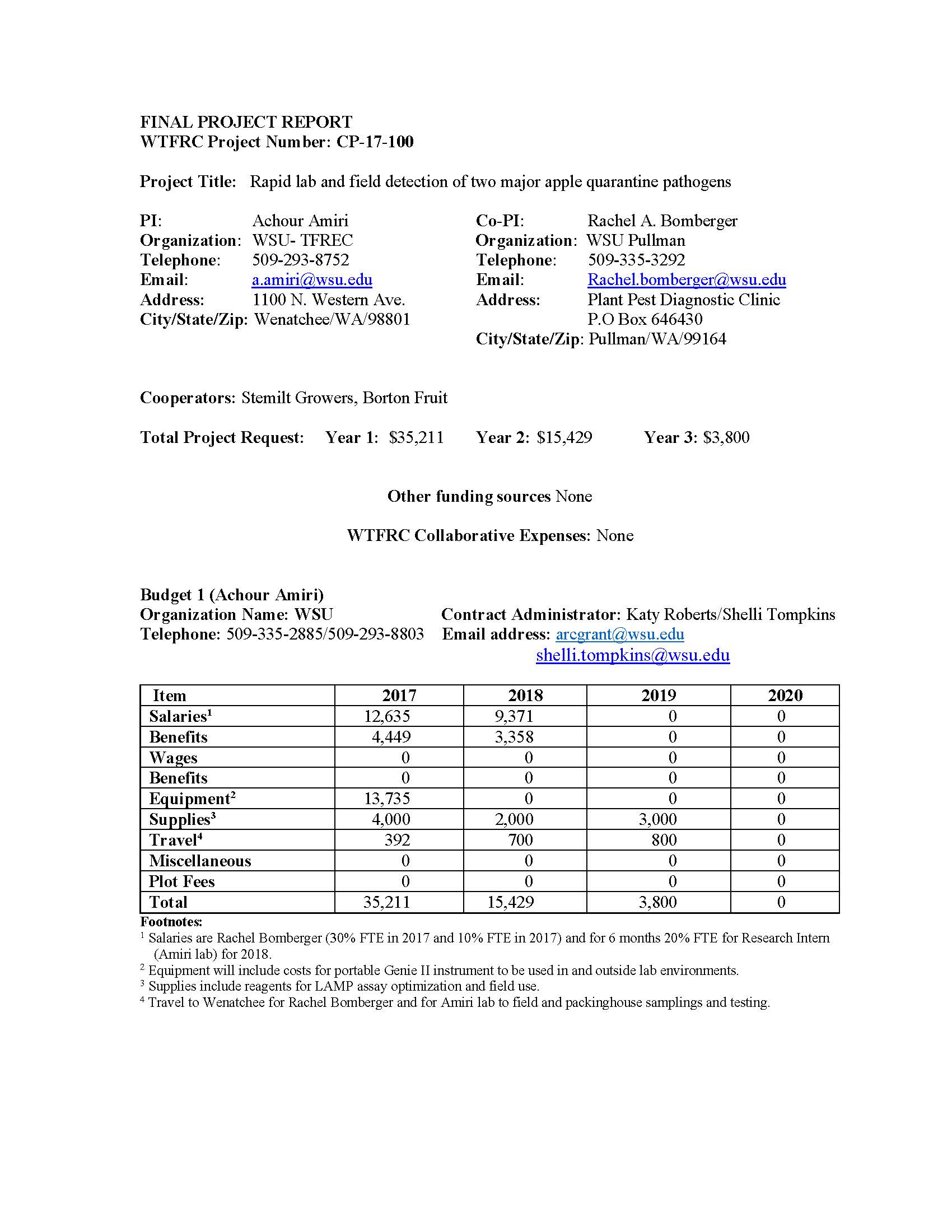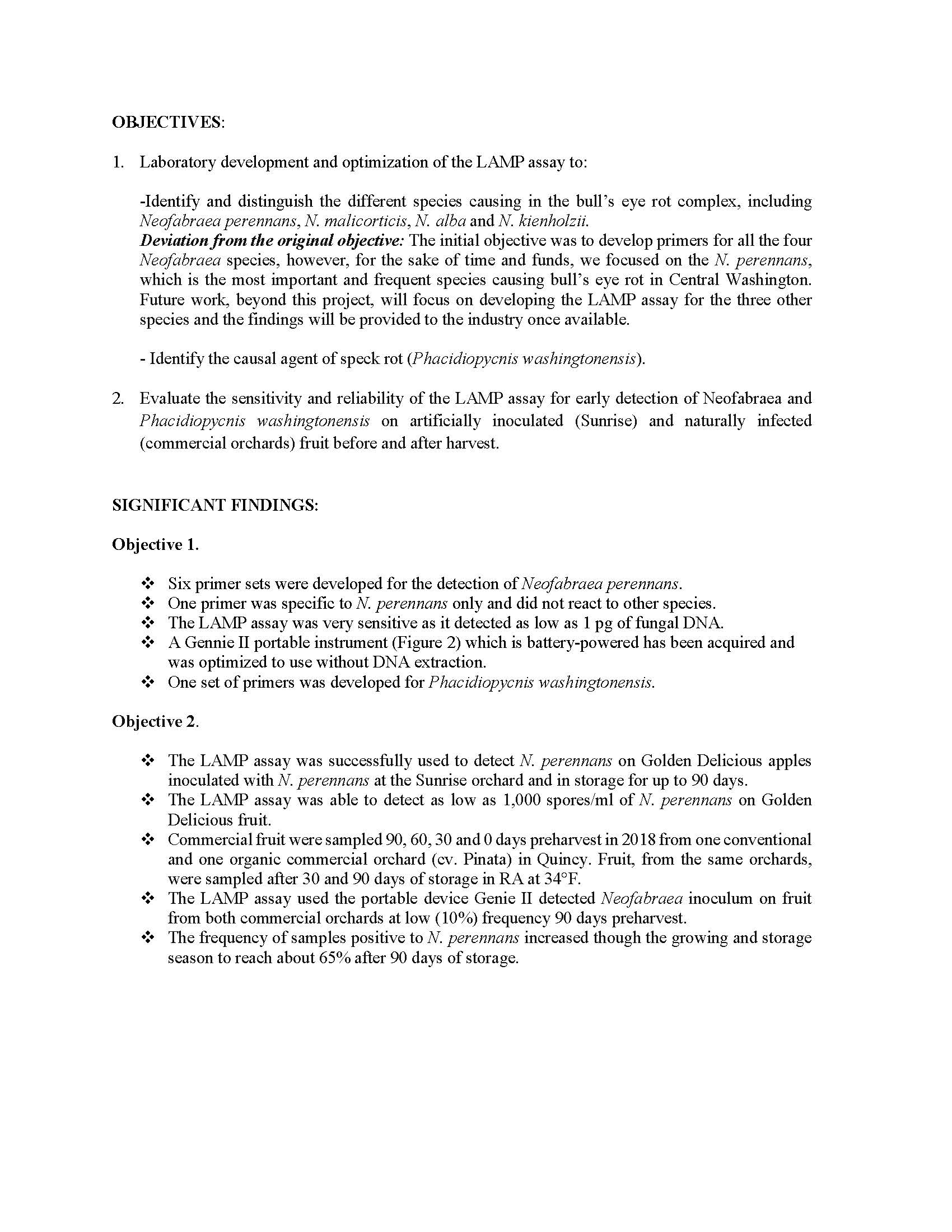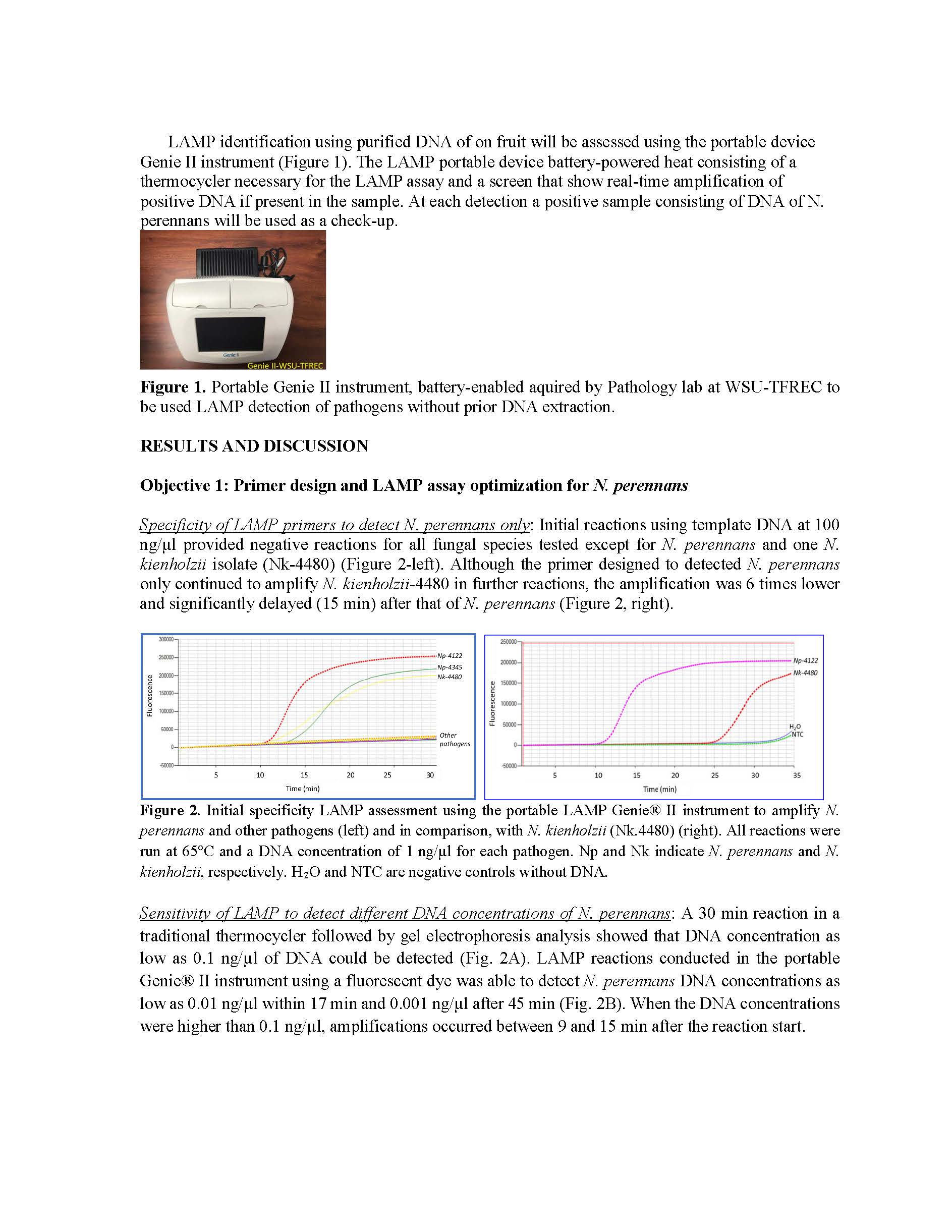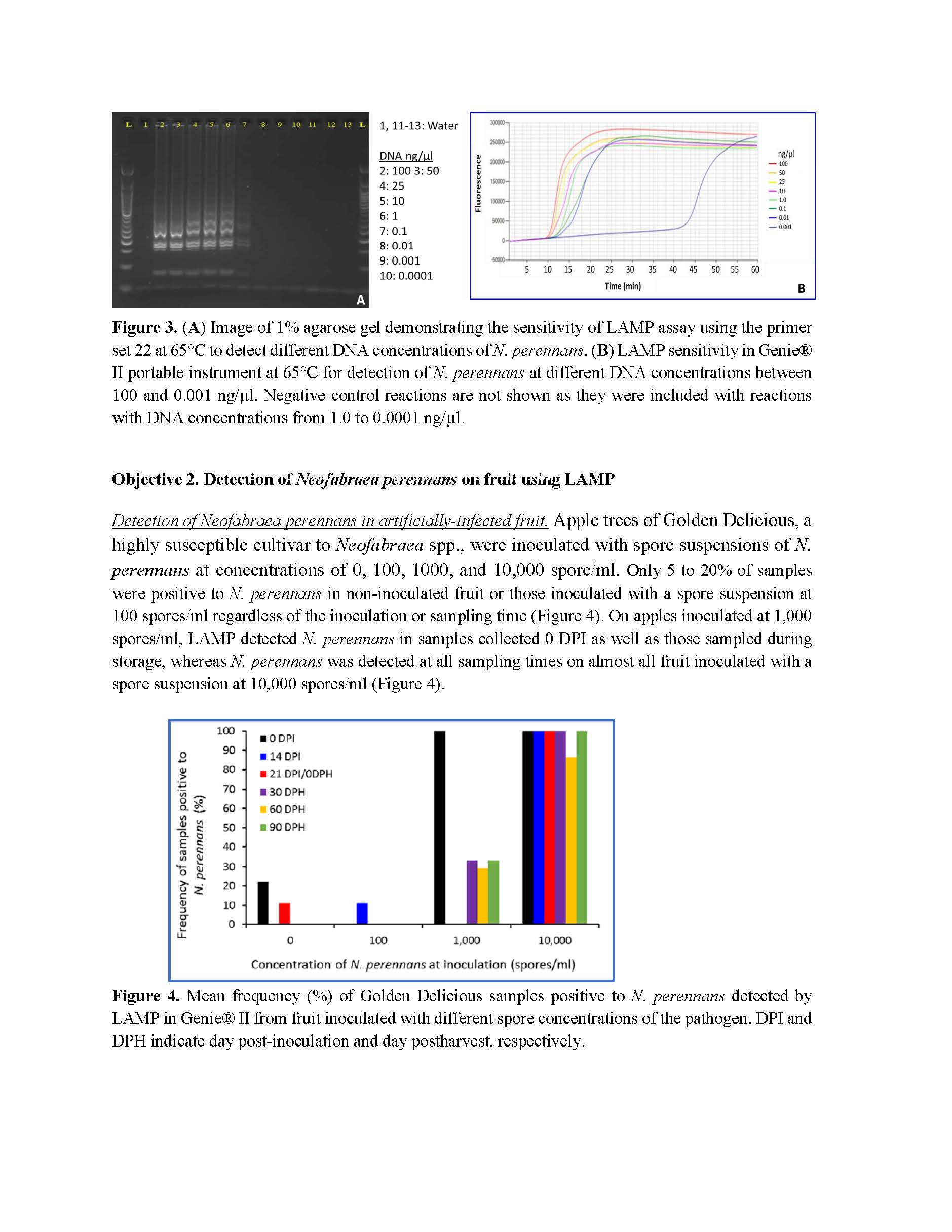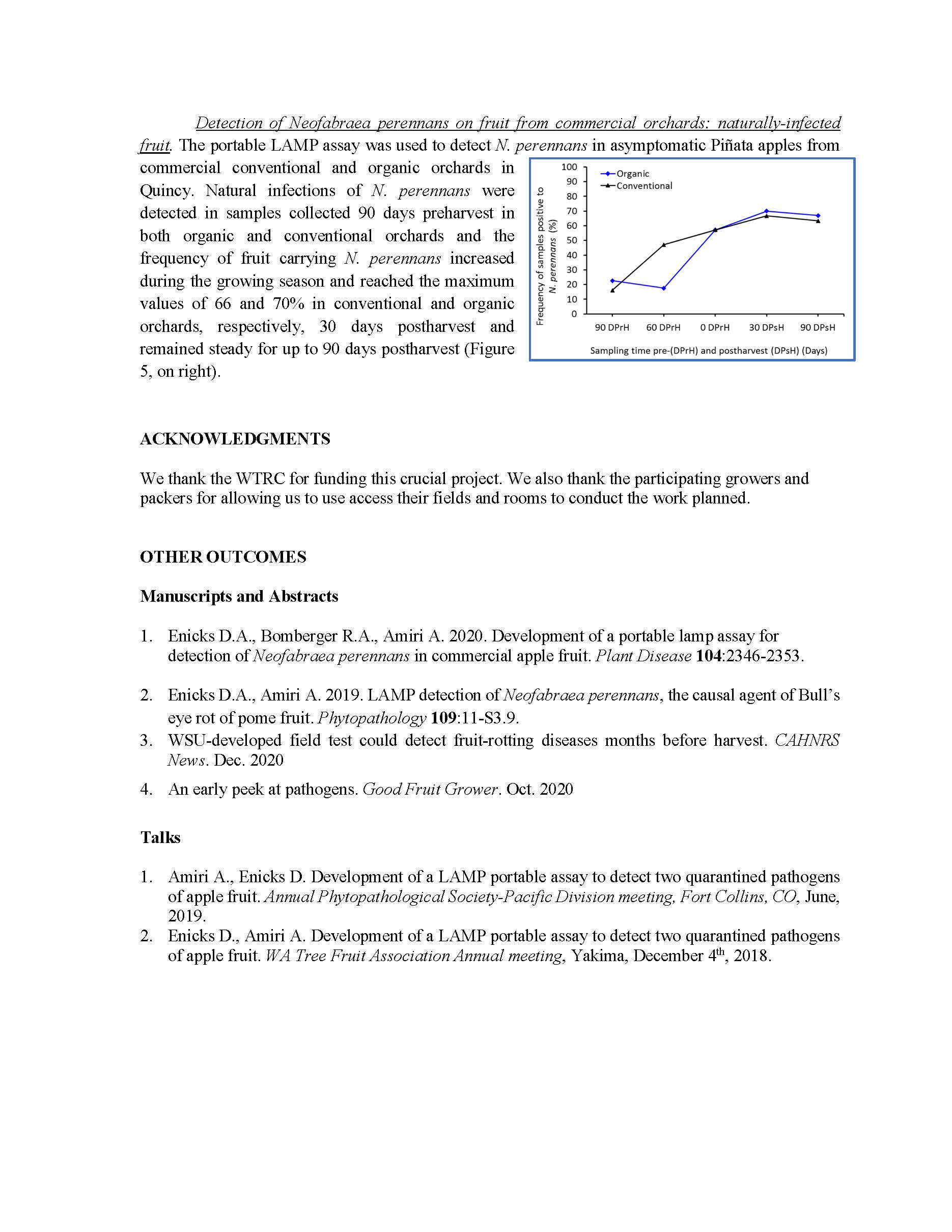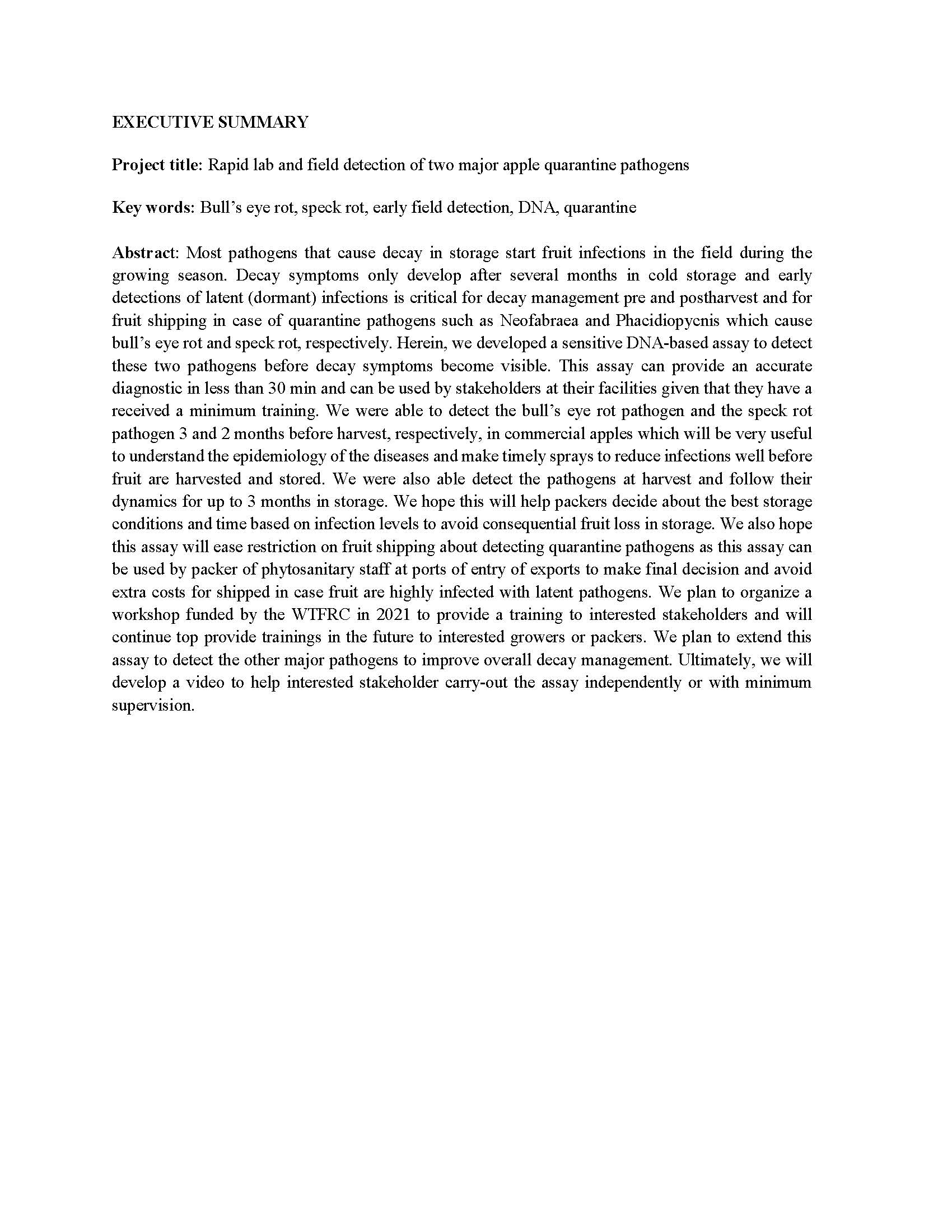Rapid lab and field detection of two major apple quarantine pathogens
Author: Achour Amiri, Rachel A. Bomberger
Published: 2021
Summary: Most pathogens that cause decay in storage start fruit infections in the field during the growing season. Decay symptoms only develop after several months in cold storage and early detections of latent (dormant) infections is critical for decay management pre and postharvest and for fruit shipping in case of quarantine pathogens such as Neofabraea and Phacidiopycnis which cause bull’s eye rot and speck rot, respectively. Herein, we developed a sensitive DNA-based assay to detect these two pathogens before decay symptoms become visible. This assay can provide an accurate diagnostic in less than 30 min and can be used by stakeholders at their facilities given that they have a received a minimum training. We were able to detect the bull’s eye rot pathogen and the speck rot pathogen 3 and 2 months before harvest, respectively, in commercial apples which will be very useful to understand the epidemiology of the diseases and make timely sprays to reduce infections well before fruit are harvested and stored. We were also able detect the pathogens at harvest and follow their dynamics for up to 3 months in storage. We hope this will help packers decide about the best storage conditions and time based on infection levels to avoid consequential fruit loss in storage. We also hope this assay will ease restriction on fruit shipping about detecting quarantine pathogens as this assay can be used by packer of phytosanitary staff at ports of entry of exports to make final decision and avoid extra costs for shipped in case fruit are highly infected with latent pathogens. We plan to organize a workshop funded by the WTFRC in 2021 to provide a training to interested stakeholders and will continue top provide trainings in the future to interested growers or packers. We plan to extend this assay to detect the other major pathogens to improve overall decay management. Ultimately, we will develop a video to help interested stakeholder carry-out the assay independently or with minimum supervision.
Keywords:

